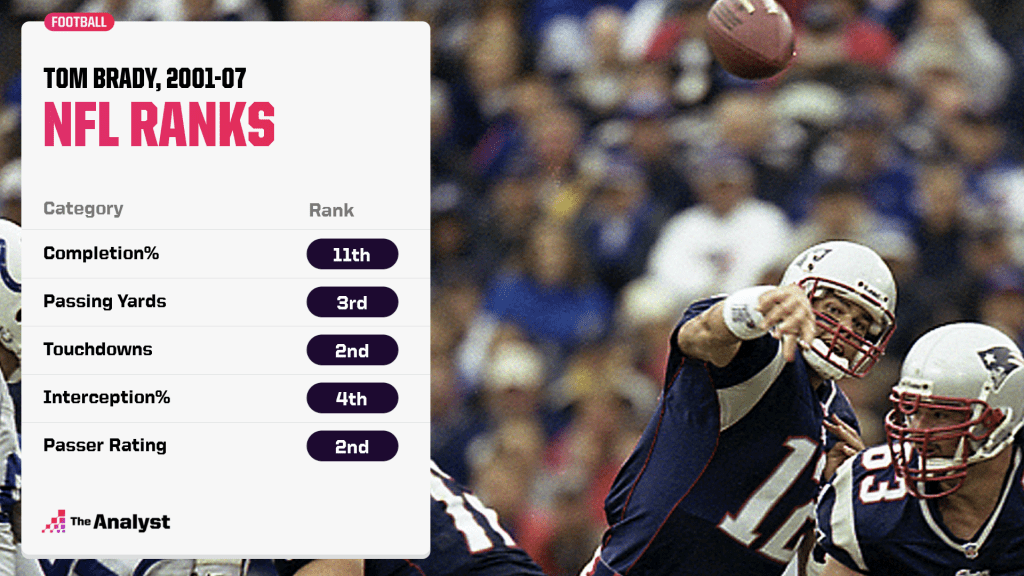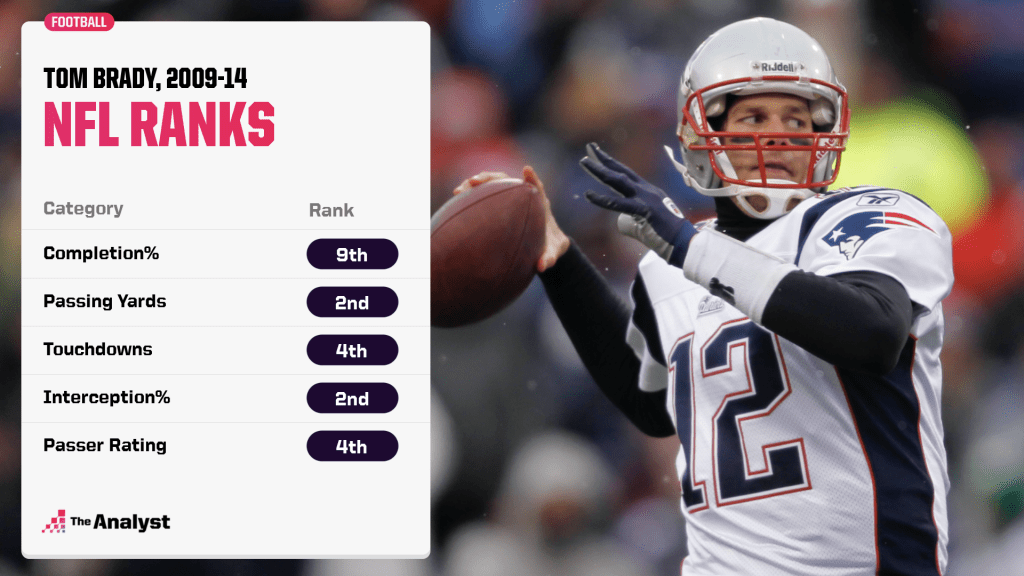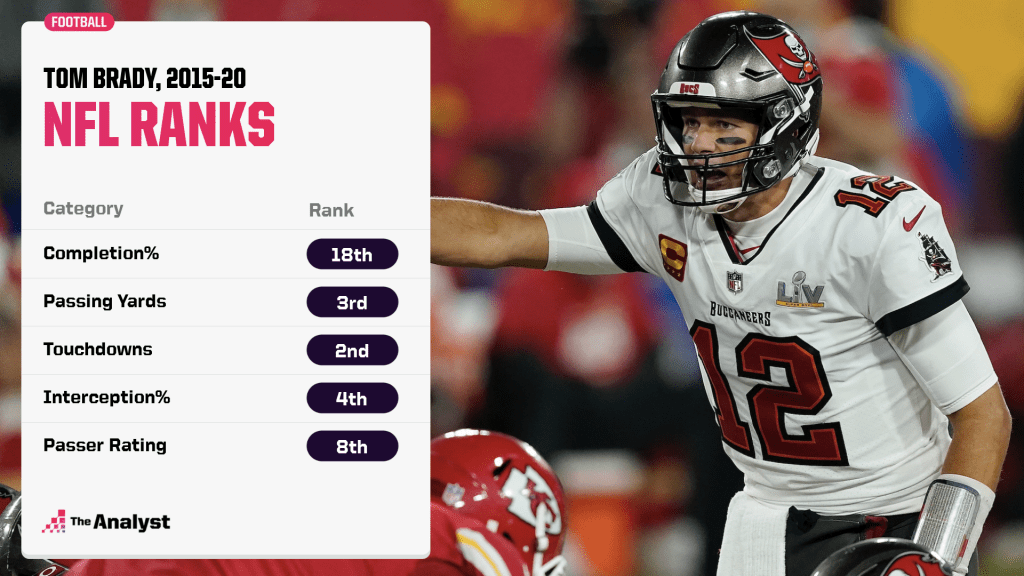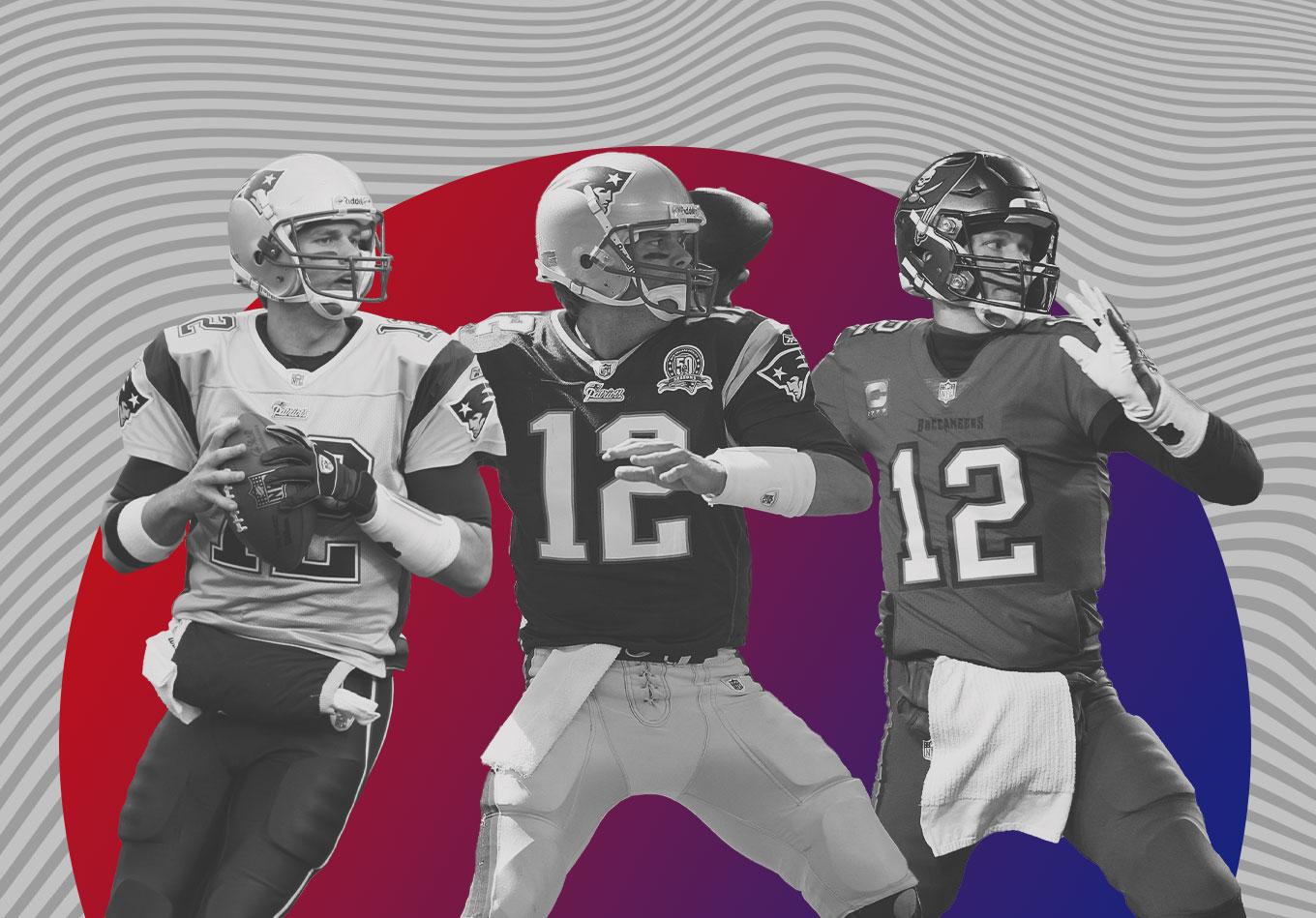There’s a reason why Tom Brady is known as the GOAT. But which of his three Hall of Fame-worthy periods has been the most Tom Terrific? We debate it on the anniversary of the day he was drafted in 2000.
On this date in 2000, the New England Patriots selected a thin, maybe even flabby kid who wasn’t even a regular starter at Michigan with the 199th overall pick in the sixth round of the NFL draft.
What draft-day afterthought Tom Brady became after Bill Belichick said he took a chance on him because he liked his confidence is difficult to fathom.
If his career with the New England Patriots wasn’t enough to earn the title of NFL’s GOAT, then Brady surely cemented himself as the greatest of all time by leading the underdog Tampa Bay Buccaneers to victory in Super Bowl LV.
For those in need of more convincing after Brady’s 10th Super Bowl start – which is double the next-closest QB, John Elway – consider how a case can be made that Brady has developed a Hall of Fame resume three different times during his career.
Our team of writers breaks down Brady’s greatness into three different time periods: 2001-07, 2009-14 and 2015-20. We’ll disregard Tom Terrific’s two other seasons, 2000 (rookie, one game) and 2008 (ACL and MCL tears, one game).
At least those two years keep him (somewhat) mortal.
2001-07: SHOT OUT OF A CANTON
Every football fan knows the legendary Brady come-up story: picked 199th in the sixth round of the 2000 NFL Draft, Patriots QB Drew Bledsoe gets hurt in the second game of the 2001 season, Brady steps in… and the rest is history.
But what most people don’t realize is how good Brady was right away—as just seven full seasons later, he would already have a Hall of Fame-worthy resume.
Between 2001-07, Brady compiled 26,364 passing yards and 197 touchdowns en route to four Pro Bowl appearances and a 2007 MVP and All-Pro season.
For comparison, Dallas Cowboys Hall of Famer Troy Aikman finished his 12-year career with 32,942 yards and 165 touchdowns – and even after adjusting for inflated passing numbers due to the rise of passing frequency in the “modern” NFL, Brady still practically matches Aikman’s career totals in five fewer seasons.
But it’s the postseason success that really separates Brady. The Patriots won three Super Bowl rings in those first seven seasons, which is more than 23 NFL franchises. Absurd.
Brady’s best season actually didn’t end in confetti. In his 2007 MVP season, Brady threw for 4,806 yards and 50 TDs against only eight interceptions. Brady’s offensive brilliance, combined with the NFL’s No. 4 scoring defense, helped the ’07 Patriots go 16-0 in one of the most dominant regular seasons ever. But they lost to Eli Manning and the New York Giants on a last-minute touchdown in Super Bowl XLII.

The only two “major” blemishes on Brady’s 2001-07 resume are missing the playoffs in 2002 when he led the NFL in passing TDs. It was the only time Brady did not at least reach the divisional round during that span. Brady posted a “slightly higher-than-career-average” 2.4 interception rate (Brady has since decreased his INT% to just 1.8, fourth-best in NFL history). For most QBs, that would mean they’re on the fast track to Canton, Ohio.
In Brady’s case? He could’ve retired on the spot when he tore his ACL and MCL in 2008 and still gotten in on the first ballot.
- Andrew Fenichel
2009-14: BACK IN THE HOF SADDLE
Let’s get what appears to be the negative out of the way: This six-year period falls short of the other two in both Brady’s Super Bowl appearances (two) and wins (one).
There, that wasn’t so bad, especially when you consider few quarterbacks in history can lay claim to either feat. In fact, Brady’s counterpart on Feb. 7, Patrick Mahomes of the Kansas City Chiefs, became just the 21st signal-caller with multiple Super Bowl starts, and the Pro Football Hall of Fame claims 13 of the first 16 who have been eligible for induction, with Peyton Manning joining them following his election this year.
After Brady’s 2008 season was derailed early by injury, he returned a year later to win NFL Comeback Player of the Year, and wouldn’t miss another game until 2016. Asked to throw the ball more often as passing offenses continued their evolution, Brady delivered in a big way.
He won NFL MVP in 2010, threw for a career-high 5,235 passing yards – the third-most in league history – during the Patriots’ 2011 Super Bowl runner-up season and followed with 4,827 yards – his second-highest total – in 2012.

In the six regular seasons from 2009-14, the Patriots went 73-23 (.760) and Brady never failed to make the Pro Bowl. He ranked second in attempts (3,515), completions (2,250), passing yards (26,812) and interception rate (1.6) and fourth in passing yards per game (279.3), touchdown passes (195), and passer rating (98.9). His passing yards per game even rose slightly to 282.6 in 12 postseason matchups.
Now, getting back to having “only” two Super Bowl starts during this six-year period? Just two other QBs make the list. Peyton Manning lost twice and Russell Wilson split his opportunities but lost head-to-head to Brady in Super Bowl XLIX.
Brady rallied the Patriots from 10 points down in the final eight minutes to beat the Seattle Seahawks and claim his third of a record four Super Bowl MVP awards.
- Craig Haley
2015-20: CEMENTING GOAT STATUS
There were still logical arguments to be had entering the 2015 season that Thomas Edward Patrick Brady, at age 38, was merely one of the all-time greats and not necessarily the GOAT.

All doubts have been washed away during this final period, in which Brady has shattered almost every record for a QB 38 or older by continuing to play at the highest level.
To properly put into context how magnificent Brady has been, let’s compare this current six-year stretch to Peyton Manning’s six-year peak with Indianapolis, which ended with Manning, then 27, being awarded his initial first-team All-Pro honor.
From the 2003 season through the end of the 2008 campaign, Manning played 108 games (regular season and postseason), going 75-21 in the regular season and 7-5 in the postseason with one Super Bowl appearance and victory. He averaged 265.4 passing yards per game, completed 66.3% of his passes, passed for 216 TDs against 80 interceptions, and had a passer rating of 101.2.
From the beginning of the 2015 season through 2020, Brady has played 108 games with a 70-22 regular-season record plus a 13-3 postseason mark. Brady has averaged 287.5 passing yards per game, completed 64.5% of his passes, thrown for 219 TDs against 60 picks, and posted a passer rating of 99.0.
The Three Eras of Tom Brady
| Years | Passing Yds | TD:INT | Comp% | Rating | All-Pro | SB Apps | SB Wins |
|---|---|---|---|---|---|---|---|
| 2001-07 | 26,364 | 2.29 | 63.0 | 92.6 | 1 | 4 | 3 |
| 2009-14 | 26,812 | 3.42 | 64.1 | 99.4 | 1 | 2 | 1 |
| 2015-20 | 25,946 | 3.96 | 65.1 | 101.0 | 1 | 4 | 3 |
Remarkably, Brady’s passing yards per game, completion percentage, interceptions percentage and passer rating from 2015-20 are better than in each of his earlier time periods.
As for iconic moments, Brady has plenty of those, too. Brady has gone 3-1 in the Super Bowl during this stretch, and it includes arguably his greatest moment, winning his fourth Super Bowl MVP by bringing his Patriots back from a 28-3 deficit to beat the Atlanta Falcons.
- Trevor Goldstein
2021-?: DON’T DOUBT TB12
After playing in 10th Super Bowl in February, it is astonishing to reflect back on Brady’s career and realize he has amassed a Hall of Fame-worthy resume during three separate periods of his 21 seasons.
We made an attempt to decide which one period was his best. But the reality is, that might be like trying to decide which child is your favorite. Ultimately, we’ll let the reader decide.
Research support provided by Stats Perform. Design by Matt Sisneros.
